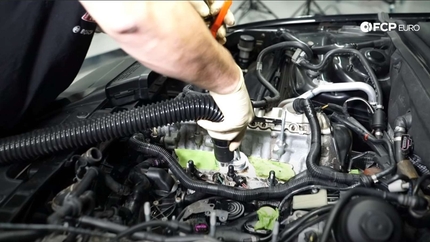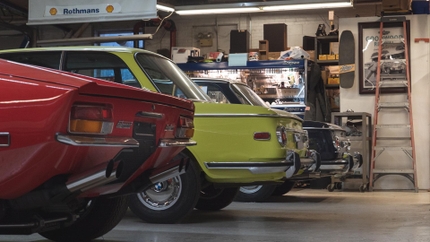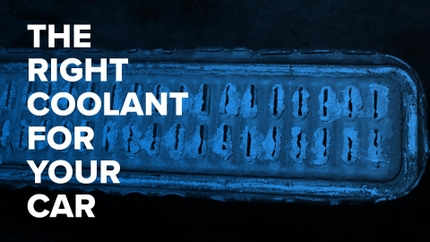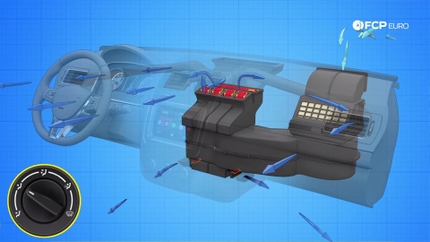- 08/21/2019
- 6 Min Read
- By: Kyle Bascombe
Mercedes-Benz M156 (C63 AMG, S63 AMG, & More) Cylinder Head Service Recommendations
There are a number of issues on the Mercedes-Benz M156 engine found in various AMG models that would require you to remove the cylinder head. Whether you need to tackle just one of the issues or all of them, you should know how to remove the cylinder head, and what to look out for once you have it removed.
The intention of this article is to familiarize you with some of the most common issues related to the cylinder head of Mercedes-AMG M156 engine as well as the tools you will need to service the head.
Mercedes-Benz M156 Services You Need to Remove the Cylinder Head for:
- Update cylinder head bolts
- Update or replace cam followers
- Replace camshaft adjusters
- Replace camshafts
- Replace cylinder head gaskets
Mercedes-Benz Models Featuring the M156 Engine:
- 2007-2011 Mercedes-Benz E63 AMG
- 2008-2015 Mercedes-Benz C63 AMG
- 2007-2011 Mercedes-Benz ML63 AMG
- 2007-2011 Mercedes-Benz CLS63 AMG
- 2007-2010 Mercedes-Benz S63 AMG
- 2007-2010 Mercedes-Benz CL63 AMG
- 2007 Mercedes-Benz R63 AMG
- 2007-2009 Mercedes-Benz CLK63 AMG
Most Common Cylinder Head Services on the Mercedes-Benz M156 Engine:
Cylinder Head Bolts
Most M156-equipped Mercedes-Benz models up to model year 2012 have cylinder head bolts that have the propensity to break at the bolt head, allowing coolant to enter the combustion chamber. The cutoff for engines not affected by this design flaw is engine serial number 60-060658. You can find the engine serial number located on a white sticker affixed to the left valve cover.
Early warning signs include a low coolant light, misfires, coolant in the oil, and a check engine light. If you are uncertain of the bolts that are currently installed in your vehicle, it is best to remove the valve covers and physically verify what is in the vehicle. We recommend all engines equipped with the older design bolts be updated as this service is relatively inexpensive compared to the cost of replacing pistons and rods when a bolt fails.
Diagram Parts List
1Camshaft Left Intake - 1560504301
2Camshaft Exhaust - 1560504501
4Camshaft Adjuster Intake - 1560503647
5Camshaft Adjuster Exhaust - 1560503747
6Pilot Bushing Intake - 1560520450
Hydraulic Lifters and Camshaft Adjusters
It's pretty common to experience noisy camshaft lifters. On occasion, camshaft lifters may go soft or “bleed down” and require a bleeding procedure. Driving the vehicle in the 2500-3500 RPM range for around fifteen minutes should bleed the lifters and resolve any noise. If the noise persists, you will want to replace the failed lifters. If the lifters are worn, we recommend replacement of the lifters as well as the corresponding camshaft. New lifters from OE supplier INA have an improved hydraulic circuit and are less prone to bleed down. Camshaft adjusters have a similar bleed down issue that is typically the result of internal wear. This manifests as a pronounced rattling on cold startups and may require valve cover removal to identify the adjuster(s) that require replacement.
- Mercedes-Benz M156 Hydraulic Lifter Kit
- Mercedes-Benz M156 Camshaft Adjuster Intake
- Mercedes-Benz M156 Camshaft Adjuster Exhaust
Intake Camshafts
Intake camshafts on both banks should be considered a regular maintenance item as most camshafts show wear-related-failures around 100,000 miles. Wear occurs most commonly on the left and right intake camshafts, and if left unattended, the cam lobe will eat through the hydraulic lifter. Frequent oil changes, using the correct oil viscosity for your climate, and including an anti-wear additive with oil changes are all measures we recommend to protect your engine. Additionally, higher mileage engines should have their oil sent out for analysis periodically, or the valve covers should be removed and camshaft lobes inspected for signs of wear.
Tools Needed to Service the Mercedes-Benz M156 Engine Cylinder Head:
Mercedez-Benz Guide Rail Pin Puller
Rail pins are size M6 and threaded internally. The cylinder head gear rides on a bearing that is also threaded internally and size M24. The puller is a threaded rod used in concert with a slide hammer. This is useful for both removal and installation of the rail pins as well as the bearing for the gear in the cylinder head. Rail pin pullers are typically sold in a convenient set containing various length M6, M8, M10, and M24 as well as the slide hammer.
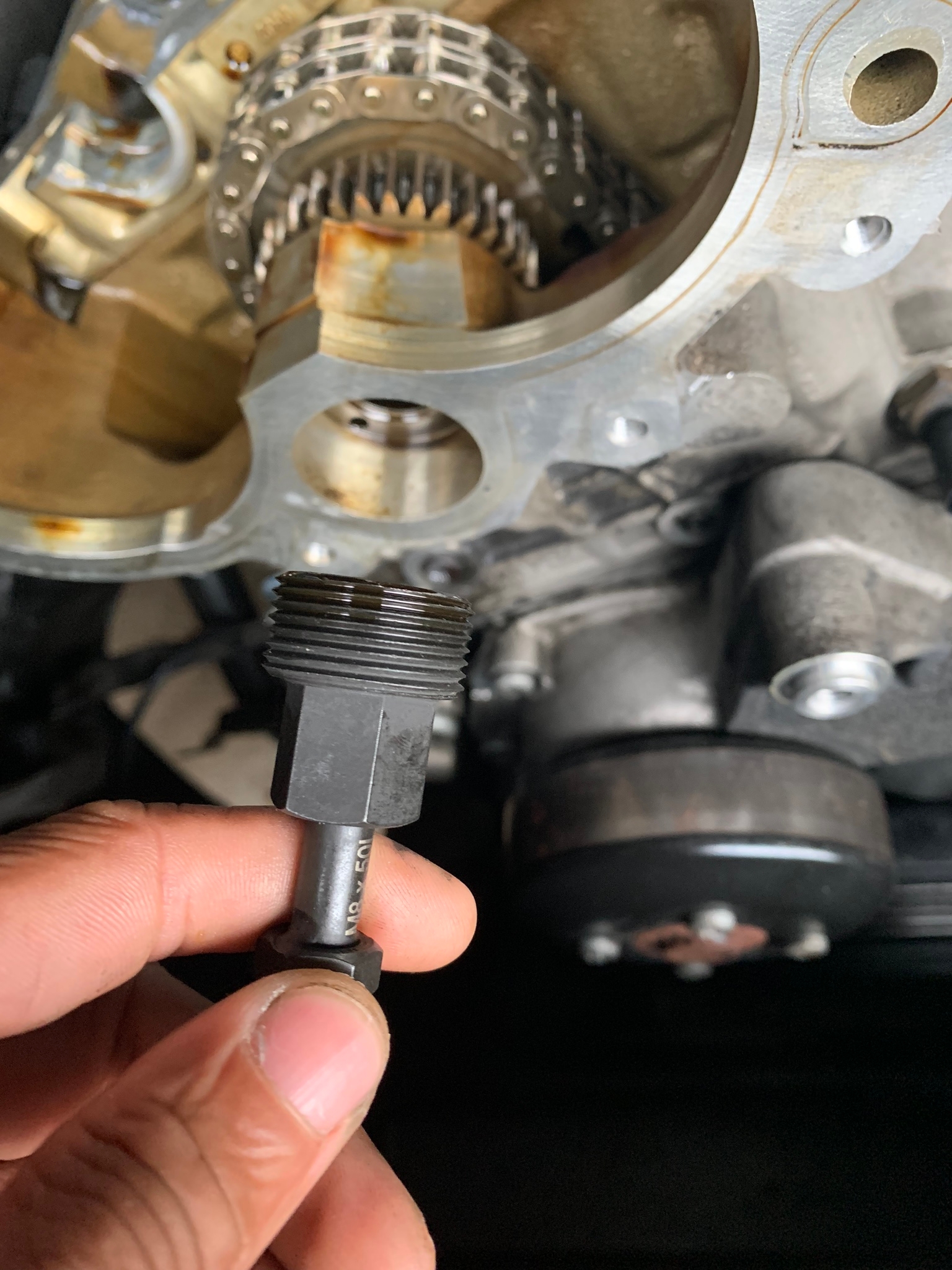
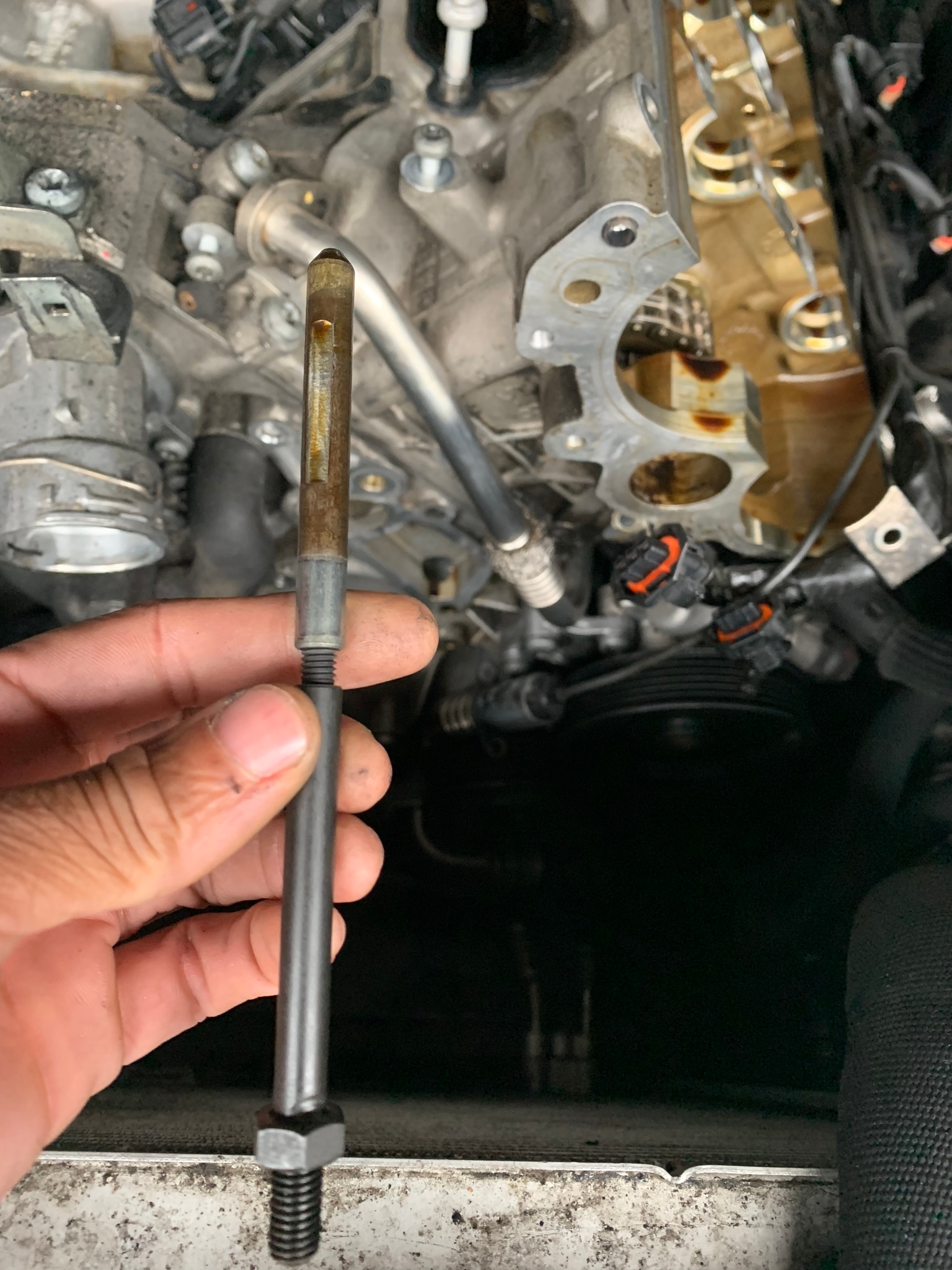
M5 Bolts
Camshaft adjusters have gear backlash compensators to prevent noise. In order to easily remove or install the cam gears, you will need a backlash compensator compressor tool or an M5 bolt to lock the gear in place. Most adjusters have a threaded hole for this purpose, and in those cases, I recommend using a short M5 bolt. Some early M156 engines don't have this, and you will need to use the compressor tool found in the M156 timing kit.
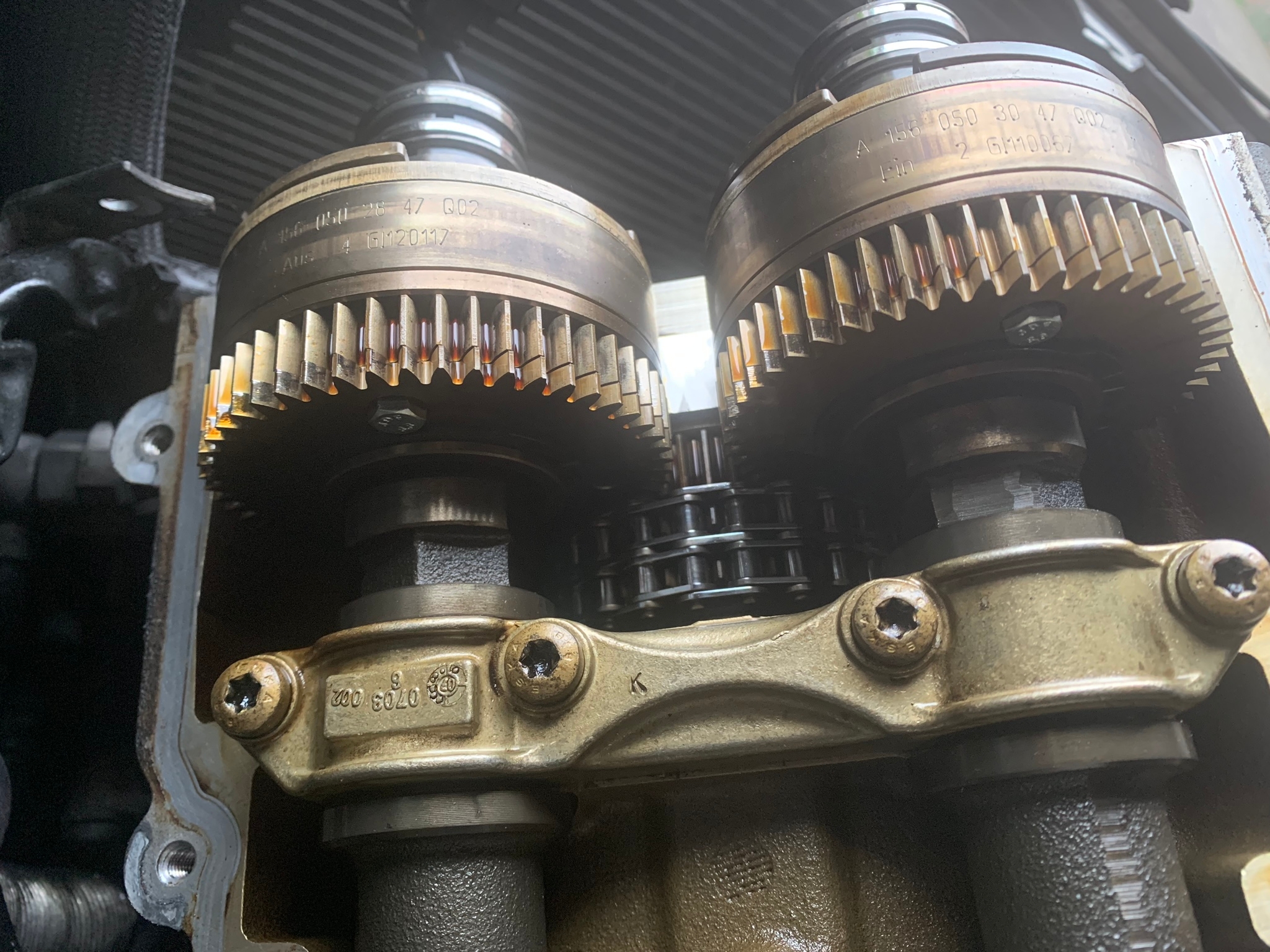
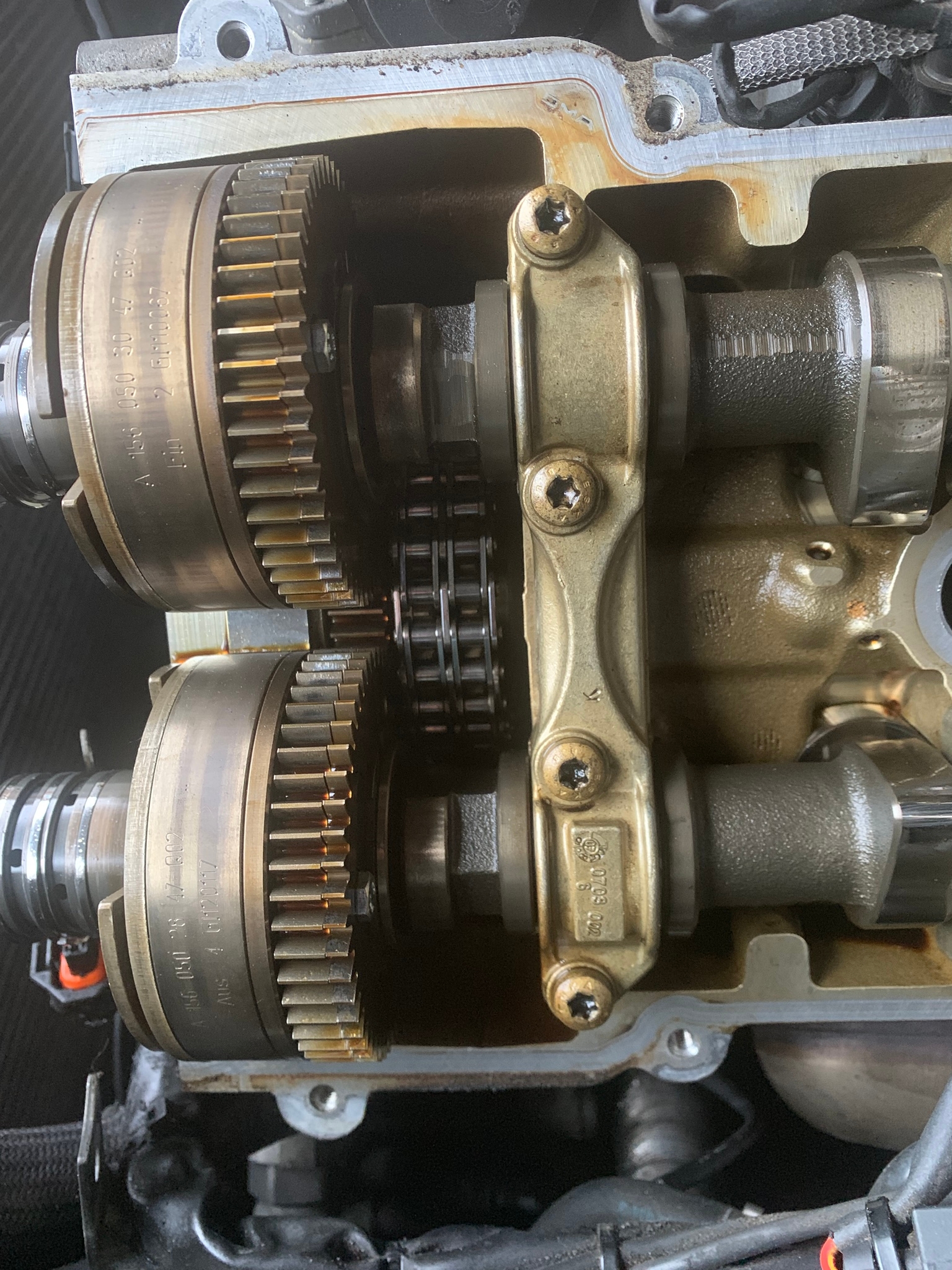
Mercedes-Benz M156 Timing Tool Kit
You will need a camshaft holding device as well as a locking plate to set the timing on each bank. Having two sets is extremely helpful but not required. Starting with the left bank and working at the rear of the cam, set the exhaust cam in position first followed by the intake, then lock them in position with the holding device. The locating plate is used to set the pulse wheels in the appropriate position. You will need to verify the cylinder head dowels are installed before using the locating plate. Do not install the plate on a head missing the front dowel pins.
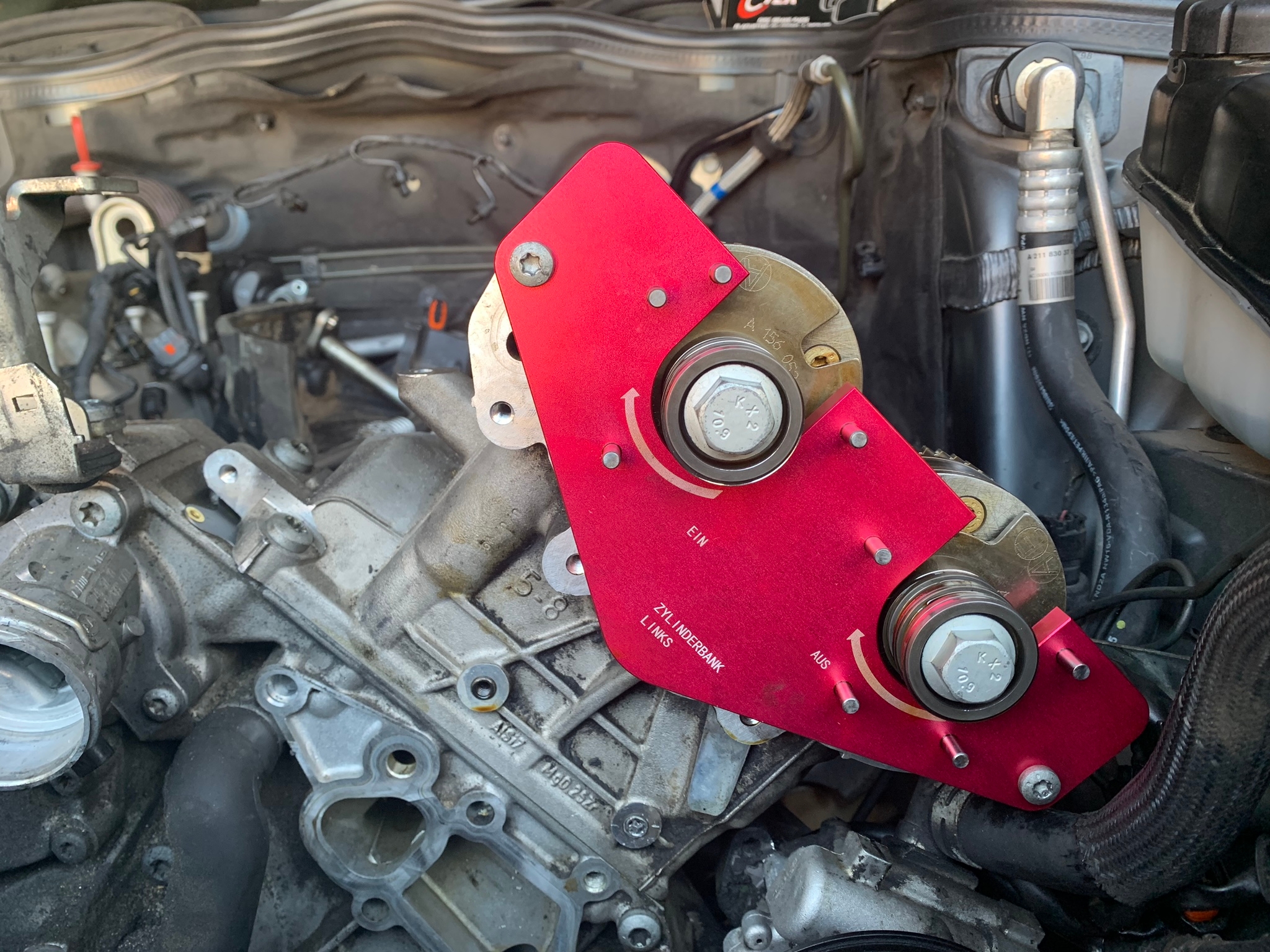
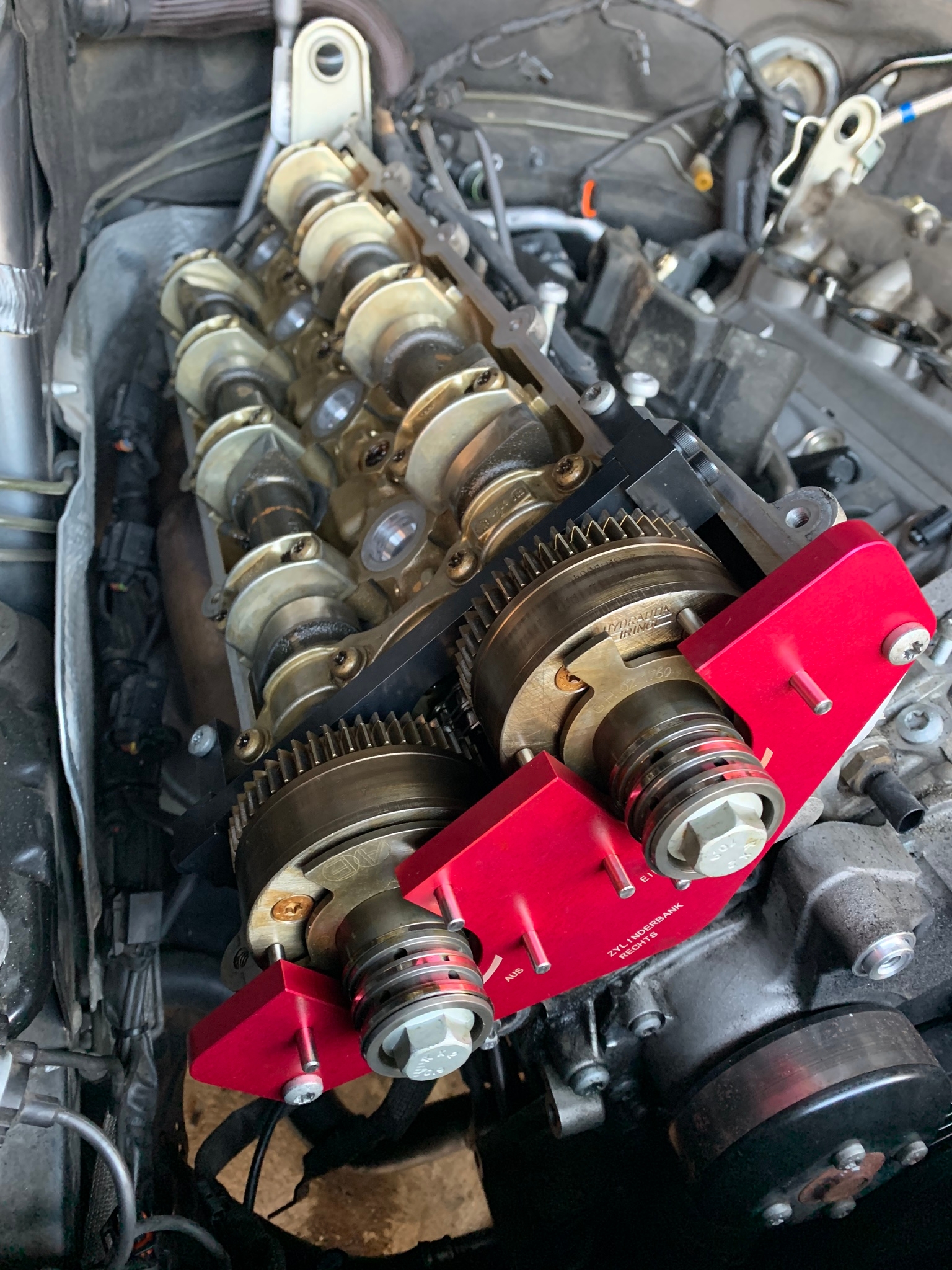
T55 and E14 Sockets
The original style bolts require a T55 socket ideally 40mm long. Replacement bolts are E14.
27mm Crank Bolt Socket
When turning the engine over, always rotate the engine clockwise. Set the engine at 40 degrees after TDC (top-dead-center) on cylinder #1 by using the mark on the crankshaft pulley. The pulley needs to line up with the indicator on the timing cover.
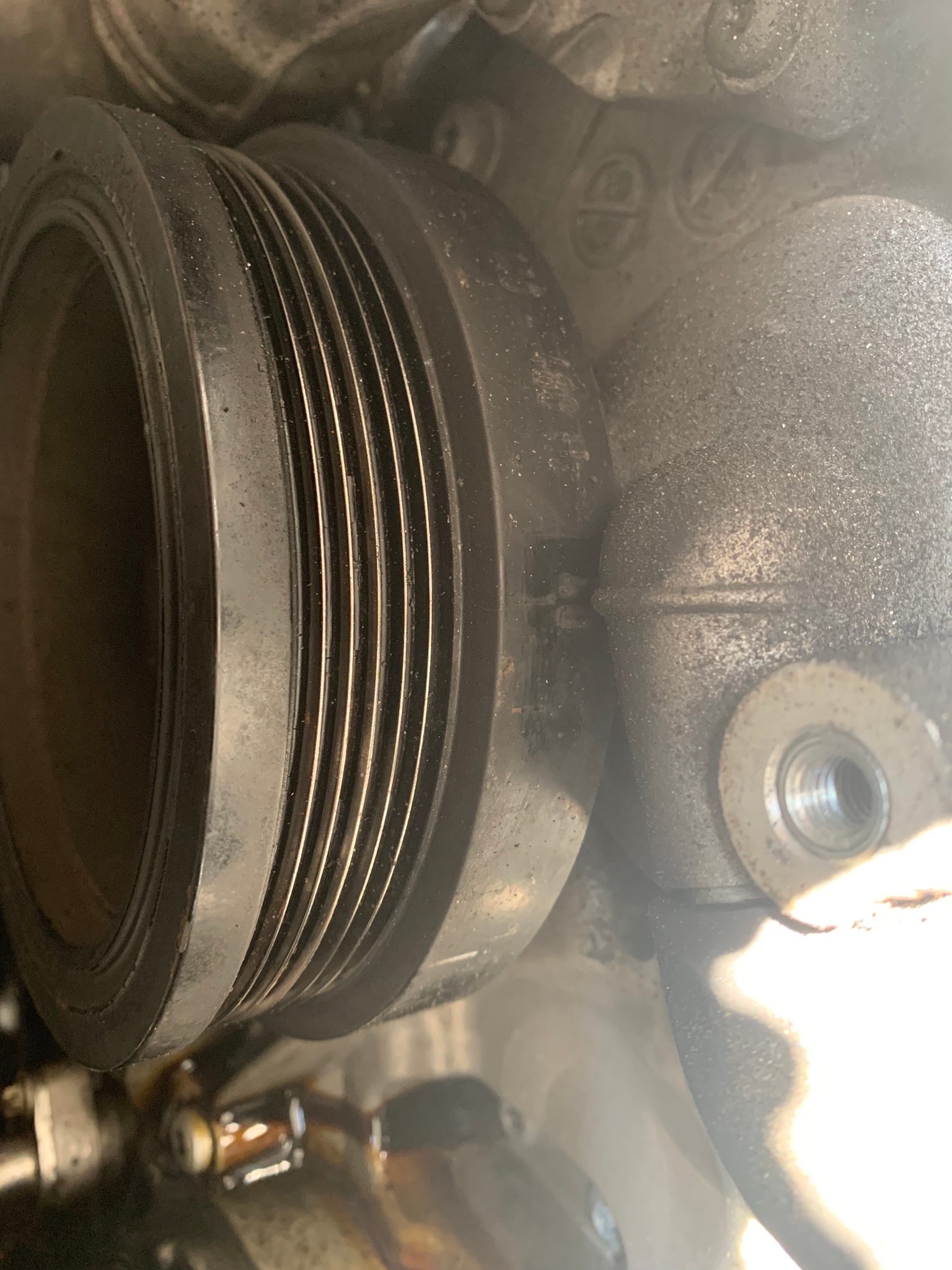
Mercedes-Benz 27.5mm Camshaft Wrench
Used to rotate the camshaft, the longer, the better for leverage. This tool can also be used to test the cam adjusters for bleed down.
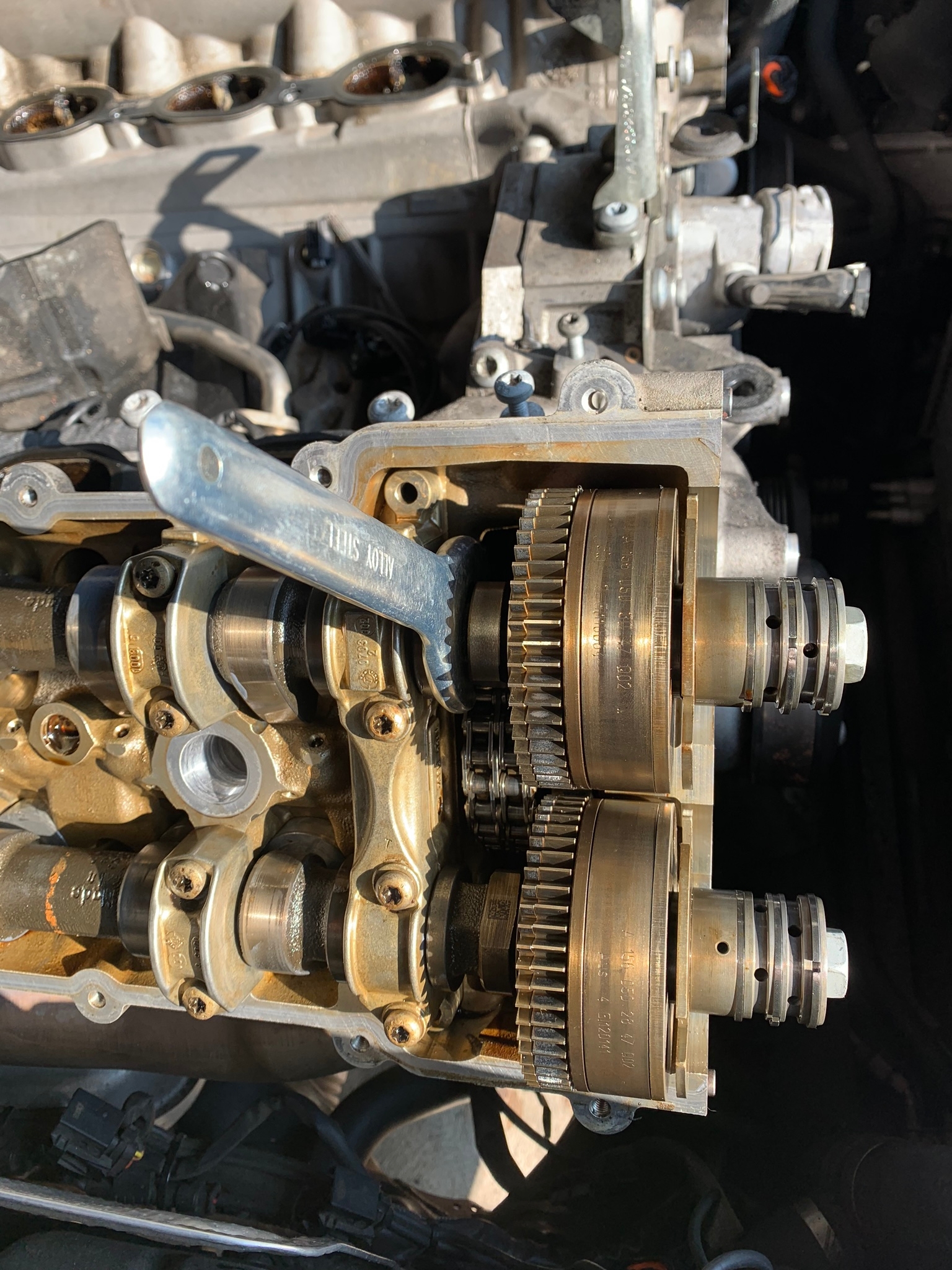
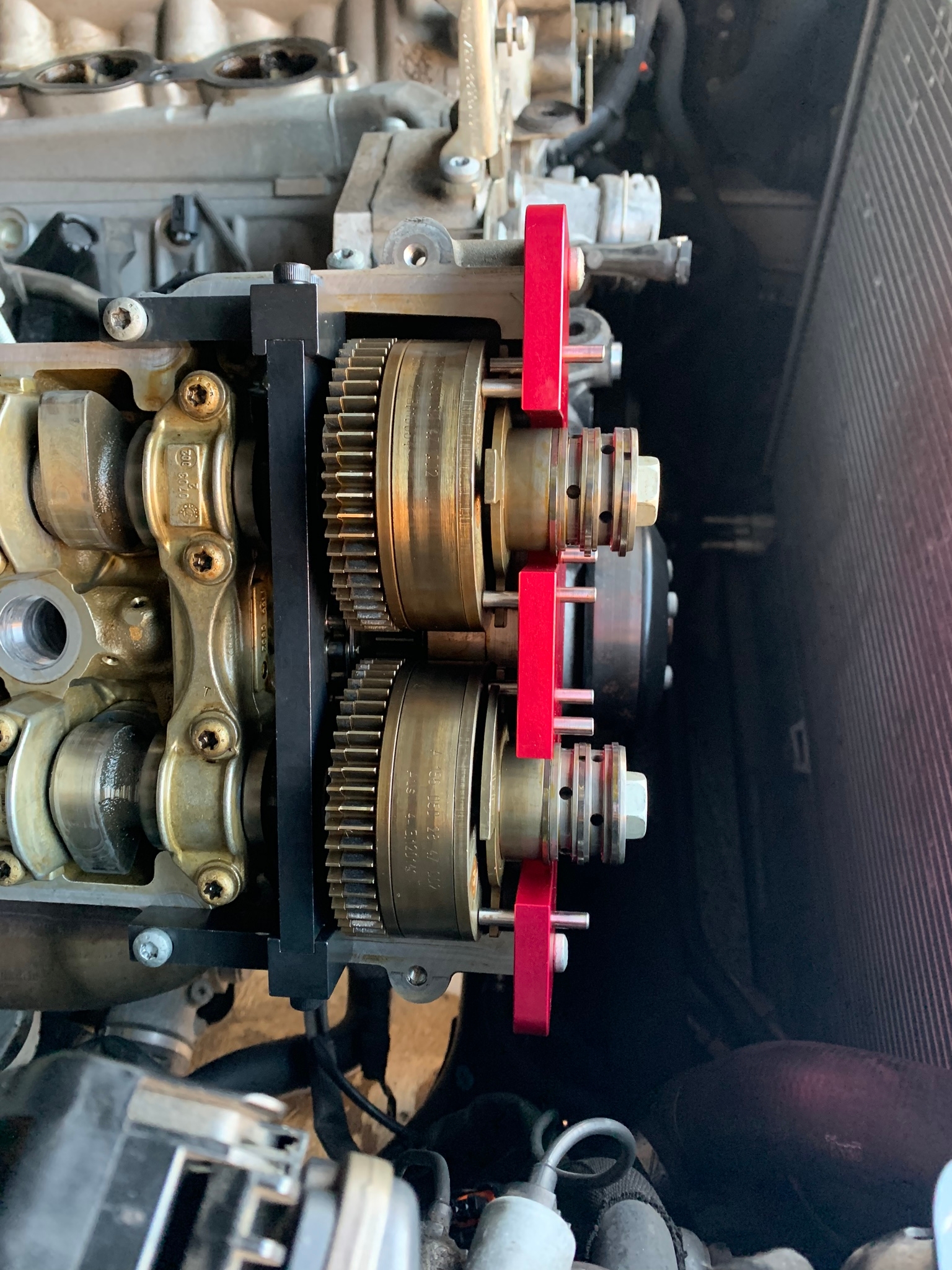
That's really it. Overall, it might seem a lot more intimidating than it actually is to work on your Mercedes-Benz M156. With the right tools and all of the parts you need readily available, there's no reason you can't do cylinder head jobs yourself.
As always, if you found this article helpful, you can follow the rest of my projects by checking back here or by subscribing to our YouTube channel. If you have any questions or comments, please leave them in the comments below.




